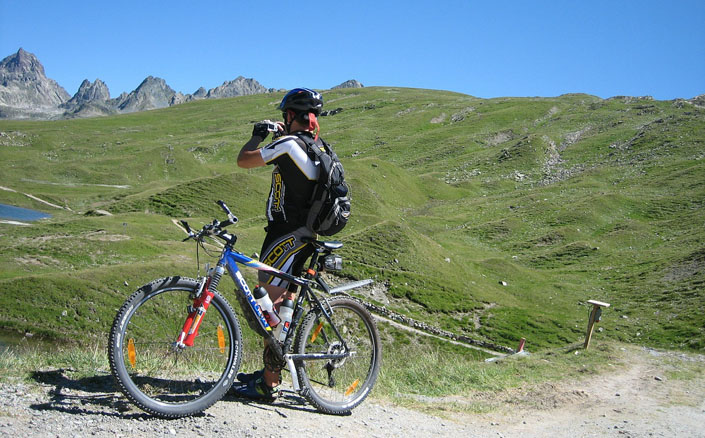
As any mountain biking forum junkie could tell you, one of the most common topics is the hardtail vs. dual suspension debate. Often the dilemma originates with confused beginners looking for advice on buying their first serious bike - but whatever the reason it is a hotly debated topic and everyone has an opinion... including me!
I come from that school of riders you would have read about: old school hardtail rider, bought a dual suspension bike, now longs for a hardtail again. You've heard it all before.
But, bear with me, because the scenery has changed in the last few years. When this question first arose, the choice was between a hardtail 26" and a dual suspension 26". New wheel sizes and plus-sized tires have changed the equation, meaning it has become a less clear-cut comparison and, perhaps, ultimately more confusing.
The same rules still apply
When comparing apples with apples, some things haven't changed. A hardtail will always make more sense budget-wise, as you can still get a lot more bike for your buck compared to a dual suspension, which are also more expensive and complicated to maintain. The hardtail will carry less weight unless you are purchasing at the top of the dual suspension market and don't mind the obvious diminishing returns.
For smoother, fast flowing, and most climbing trails, a hardtail is a good choice. Alternatively, on rougher surfaces the dual suspension bike is more comfortable and sure footed, affords greater speed, and, on technical climbs, has an advantage because the rear wheel stays planted allowing seated climbing.
Wheels make all the difference

29er hardtails are now better than ever. All the kinks have been ironed out of the geometry resulting in these bikes riding the way we always thought they should: fast, momentum sustaining, big wheeled fun! It has been said that a hardtail 29er feels like a short travel 26" dually; sounds dubious and I'm not sure if this is true, but what I do know is that the larger wheels have certainly breathed life into the venerable hardtail mountain bike.
DID YOU KNOW? The old standard 26" wheel has basically now been replaced by the 27.5". We predicted this many years ago, and now have a look in your local supermarket; many of the $100 'bike in a box' are now 27.5" or even 29ers!
29ers have changed the way we look at hardtails, thereby making the decision between buying a hardtail or dual suspension bike more complicated. The way a 29er sustains speed and rolls over stuff makes it the bike for riders whose local trails are fast flowing and smoother. It also means that the modern 29er can handle rougher trails better than any old school hardtail.
The latest geometry tweaks have also introduced a more playful manner into these bigger wheeled bikes, which were originally thought of as lumbering compared to a flickable 26", particularly for smaller riders. Stiffness has been improved as well - The large wheels roll over small bumps nonchalantly; it takes a bit more to rattle them.
As well as this, with two wheel sizes to choose from ,the options have literally doubled!
27.5+ tires
Another innovation is the plus sized wheel/tire. Many manufacturers are producing specific bikes to make use of this latest phenomenon, which places super fat 3" tires onto an oversize rim. The result: stupid amounts of grip and plenty of rubbery comfort for your ride! These bikes are being marketed as anything from a long distance adventure platform right up to an aggressive hardtail for railing corners!
If one of the benefits of a dual suspension bike is comfort and grip, will this new product awaken more would be hardtailers from their dual suspension fuelled sleep?
To make matters even more confusing is the realization that all these new wheel-related advances are also available on dual suspension platforms! The point we are making is that there are now more reasons to go with a hardtail than ever before. The bigger wheelsizes, improved geometry, and wider tires means the hardtail is constantly improving and keeping up with dual suspension bikes, no problems.
Whether this means it is the bike for you still depends on many variables: Where you ride, how you ride. and, of course, budget. But hopefully when you visit your local bike shop you will test ride a few options (including a hardtail) in your search for the perfect bike.

RELATED ARTICLE:
10 Tips to buying a hardtail mountain bike
Hardtails are a great option for many mountain bikers. They are a perfect starting point for new riders, their simplicity, (compared to a dual suspension bike), makes them easy to maintain and they can be fast and efficient in the right hands. They are also... READ MORE

RELATED ARTICLE:
Are cyclists the world's toughest athletes?
Professional road cyclists are the toughest athletes in the world. Bold claim? Maybe, but in the aftermath of some truly spectacular crashes at this year's Tour de France, perhaps it is time to put together a handful of the most incredible acts of insane toughness and... READ MORE



